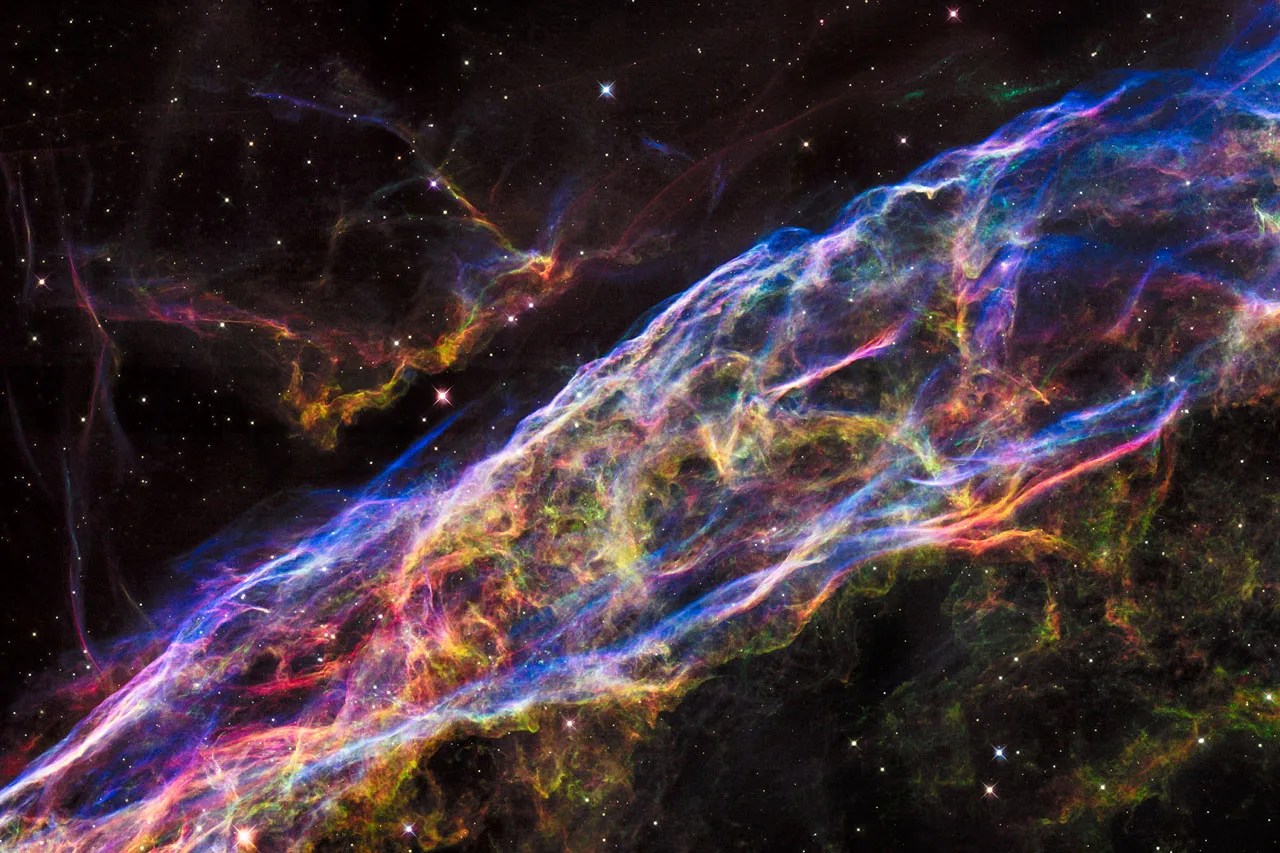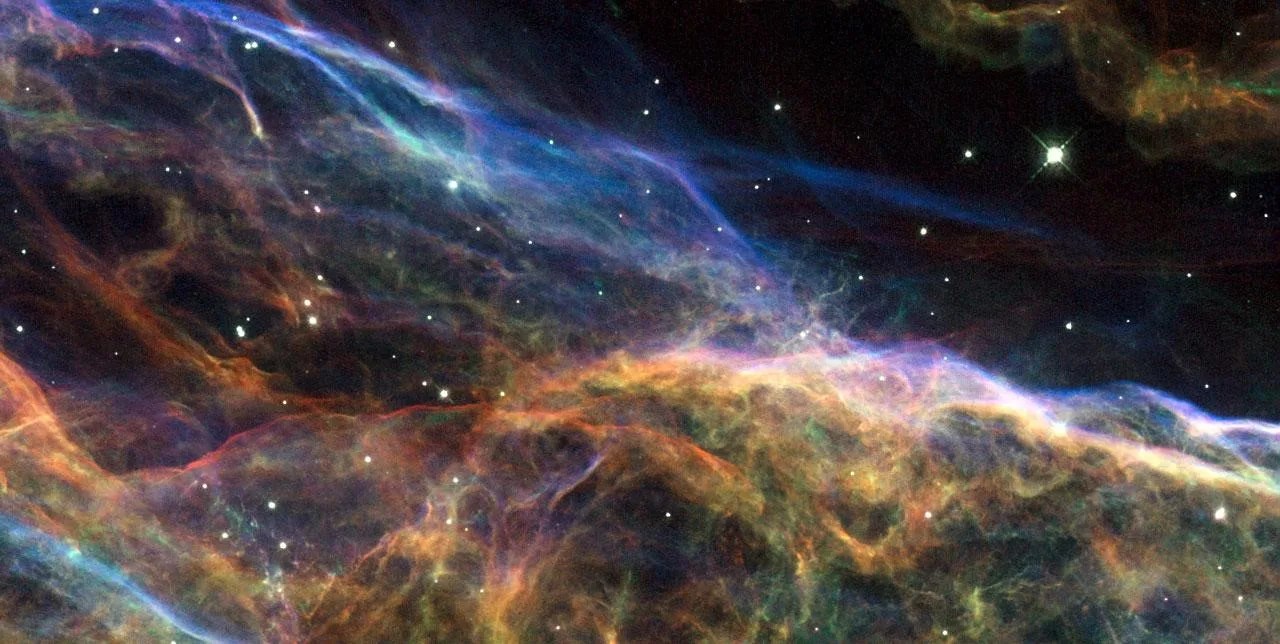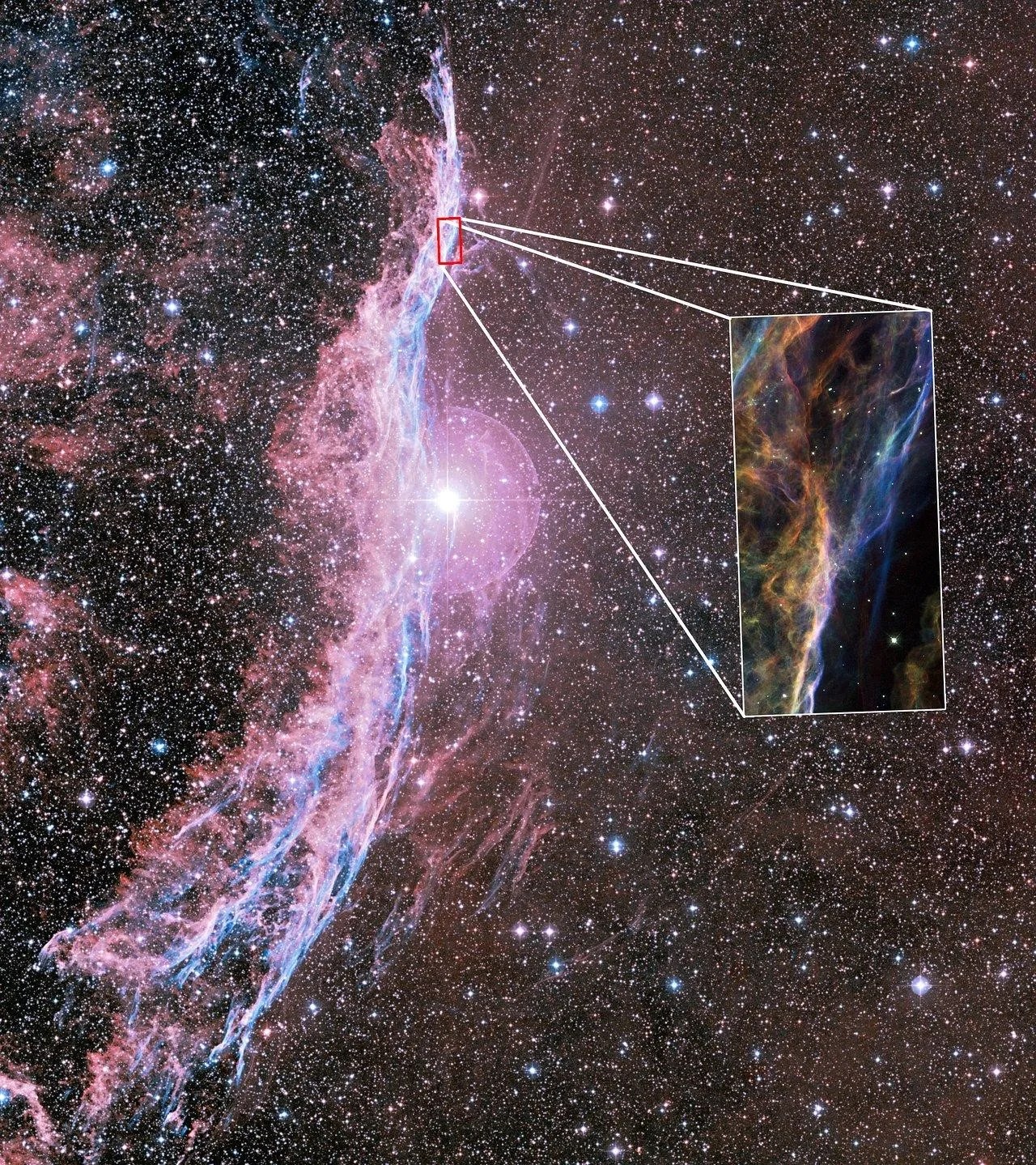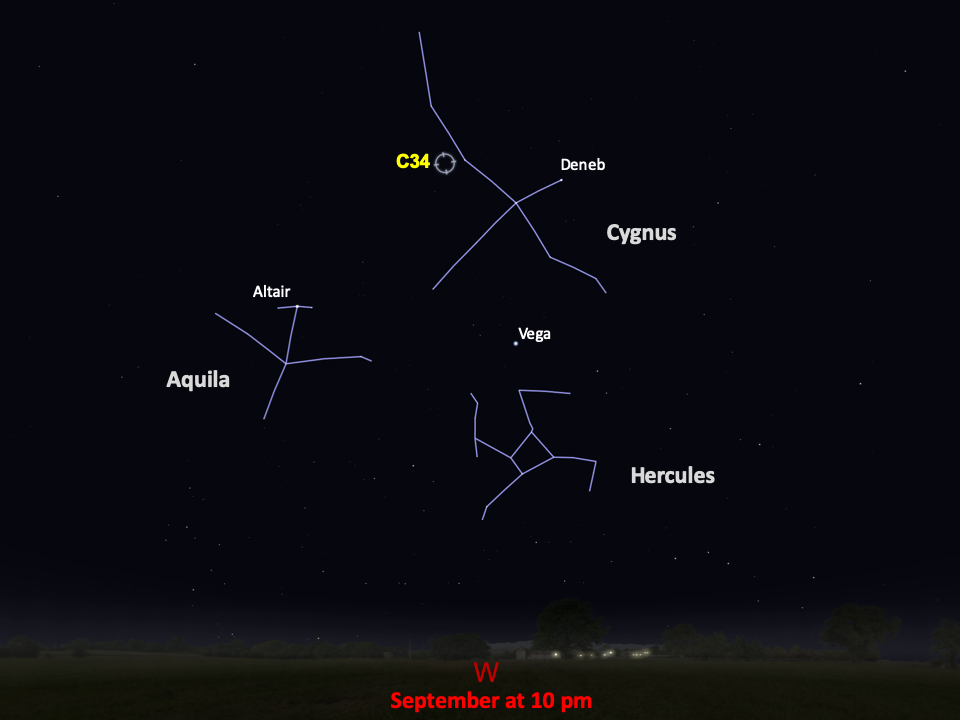Caldwell 34
Caldwell 34 is the western part of the Veil Nebula.
Distance
2,000 light-years
Apparent Magnitude
8.0
constellation
Cygnus
object type
Nebula, Supernova Remnant

The Veil Nebula is one of the most spectacular supernova remnants in the sky, extending 110 light-years across and covering an area of sky six times larger than the full moon. The western section of the Veil is Caldwell 34 (or NGC 6960), while the eastern part is Caldwell 33. The remains of a star — once 20 times as massive as the Sun — that exploded several thousand years ago, the Veil Nebula lies about 2,000 light-years away in the constellation Cygnus. It is often referred to as the Cygnus Loop because of its arced shapes.


This Hubble image displays a section of Caldwell 34 also known as the “Witch’s Broom” that’s roughly two light-years across, covering only a tiny fraction of the nebula's structure. It’s a mosaic of six Hubble pictures taken with the Wide Field Camera 3 in April 2015.
The fast-moving blast wave from the supernova explosion is plowing into a wall of cool, denser interstellar gas, emitting light and forcing twisting tendrils of gas into a frenetic ballet. The nebula lies along the edge of a large bubble of low-density gas that was blown into space by the dying star prior to its self-detonation.
This image shows an incredible array of structure and detail from the collision between the blast wave and the gas and dust that make up the cavity wall. The nebula resembles a crumpled bed sheet viewed from the side. The bright regions are where the shock wave is encountering relatively dense material or where the "bed sheet" ripples are viewed edge on.
By comparing these 2015 observations to images taken by Hubble in 1997, astronomers can study how the nebula has expanded in the intervening 18 years. And by studying the nebula’s structure, scientists have learned more about how the formation of the nebula’s tendrils have been influenced by density variations in the expelled stellar material as well as the space around it.
Astronomer William Herschel identified the Veil Nebula in 1784. His work was followed up by Williamina Fleming’s 1904 discovery of a fainter portion of the nebula, referred to as Pickering’s Triangle (after the director of the Harvard College Observatory, where Fleming worked). The Veil Nebula is best viewed in early autumn from the Northern Hemisphere (early spring in the Southern Hemisphere). Roughly magnitude 8, the nebula is not visible to the naked eye, but it can be seen through a telescope or even binoculars under a dark sky. A nebula filter will help brighten the Veil’s appearance and pull out its wispy features.
For more information about Hubble’s observations of Caldwell 34, see:
Veil Nebula Supernova Remnant
Uncovering the Veil Nebula

Glossary
Magnitude - The brightness of an astronomical object, represented by a number; bright objects have low numbers on the magnitude scale, while dim objects have high numbers.
Nebula - An interstellar cloud of dust and gas; either a location where new stars are being forged or a cloud of material ejected into space by a dying star.
Supernova - The explosion of a massive star at the end its life, which ejects material into space and causes the star to temporarily brighten in our sky.
Explore Hubble's Caldwell Catalog
The following pages contain some of Hubble’s best images of Caldwell objects.

Caldwell 1
Also known as NGC 188, this group of stars formed from a large cloud of gas making the stars roughly…

Caldwell 2
This shell of gas is expanding outward, away from the dying star within.

Caldwell 3
This barred spiral galaxy was first spotted by British astronomer William Herschel in April 1793 in the constellation Draco.




